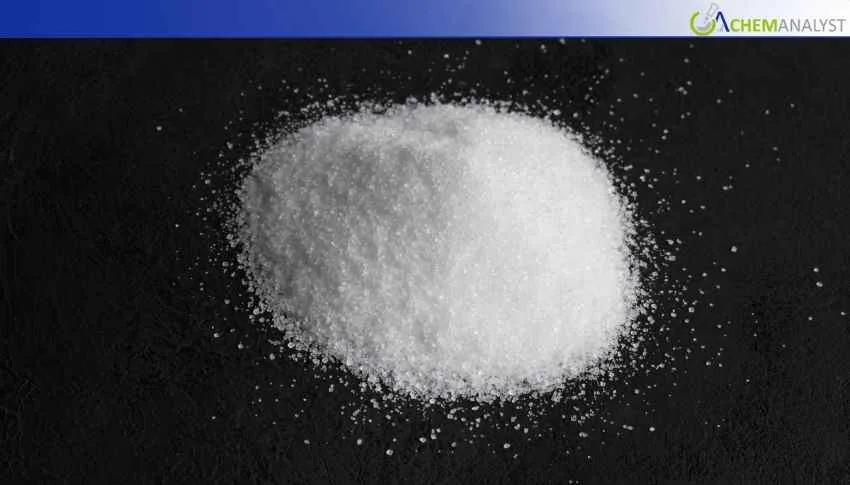Welcome To ChemAnalyst

In November 2025, U.S. import prices for sorbic acid had a moderate bounce after previous declines, on a combination of supply constraints, high production costs, and increasing freight costs. Spot container shipping rates on Asia-U.S. trade lanes jumped on the back of November 1 GRIs, with carriers restoring capacity discipline and elating landed costs for bulk and specialty chemical imports. Furthermore, improved demand from downstream food, beverage, pharmaceutical, and cosmetic markets- also likely to support the steady upward trend. Ahead of this, the Inventory replenishment by manufacturers and distributors owing to the winter holiday season, also likely to keep the market trend on the upper side. At the same time, on the supply side, feedstock volatility and fluctuating energy costs have been associated with production slowdowns in major exporting regions, which may tighten the sorbic acid availability and place upward pressure on import prices. However, market players across the nation state that the price spike could soften in December if freight rates ease, post-holiday demand cools and production costs stabilize, while importers should be positioning procurement accordingly.
U.S. import prices for sorbic acid likely to rebound modestly in November 2025 by 0.5 percent after earlier declines, as a combination of supply reduction, rising production costs, and freight pressures intersect with steady demand from the food, pharmaceutical, and cosmetics industries.
Freight developments have been one of the major contributors to this upward price movement. Spot container shipping rates in Asia-U.S. trade lanes jumped in early November with a general rate increase (GRI) rolled out by major carriers on November 1.
Shipping reports indicate that the reinstatement of capacity discipline by carriers contributed to a rebound in the global container freight index, reflecting rate recoveries across key lanes. Even though the majority of sorbic acid usually comes in bulk via tankers or iso tanks rather than containers, these increases in container rates still affect overall landed costs for importers, putting upward pressure on U.S. Sorbic acid import prices.
In addition to the pressure from the logistics costs, the end-user demand is likely to rebound. Sorbic acid, being widely used as a preservative in processed foods, beverages, pharmaceuticals, and cosmetics, keeps benefiting from global consumer trends in favor of shelf-stable, clean-label, and preservative-secured products. Various market players revealed that manufacturers and distributors have been actively replenishing their Sorbic acid inventories owing to the winter holiday season when sales of packaged foods and related goods reach their peak. This front-loading of Sorbic acid orders has amplified the urgency for timely shipments, supporting price increases in November.
Supply-side pressures are also contributing to the price rebound. Major exporting regions, where high sorbic acid production capacity is located, continue to be burdened by feedstock volatility, fluctuating energy costs, and ongoing environmental or compliance-related production slowdowns. These factors have constrained Sorbic acid output volumes, thus tightening export availability and driving higher landed prices for U.S. importers.
Despite the November rebound, many market watchers anticipate that Sorbic acid price spike may be temporary. Various market players state that some carriers are already withdrawing rate increases as capacity stabilizes, and container freight indices could ease in weeks ahead. Furthermore, importers and end-users may slow new Sorbic acid orders after the seasonal rush as inventories fill, easing demand pressures. If freight rates ease and supply-chain conditions normalize, sorbic acid import prices in December could see some modest softening. Expected stabilization/slight easing in feedstock and production costs may further support the downward adjustment.
For importers or manufacturers in the U.S. depending on sorbic acid, prudent procurement planning becomes paramount. Securing volumes in early November may lock in supply ahead of freight-driven cost inflation; however, over-purchasing could expose buyers to potential price reductions should the market conditions ease later in the year. Downstream producers should closely watch freight developments and demand forecasts for optimal inventory and cost management strategies.
We use cookies to deliver the best possible experience on our website. To learn more, visit our Privacy Policy. By continuing to use this site or by closing this box, you consent to our use of cookies. More info.
